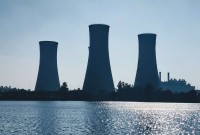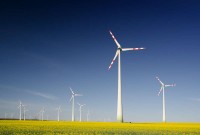- Home
- Business Processes
- Industry Knowledge
- Aerospace Industry
- Automotive Industry
- Banking Domain
- BFSI Industry
- Consumer/ FMCG Industry
- Chemicals Industry
- Engineering & Construction
- Energy Industry
- Education Domain
- Finance Domain
- Hospitality Domain
- Healthcare Industry
- Insurance Domain
- Retail Industry
- Travel and Tourism Domain
- Telecom Industry
- Leadership Skills
- eLearning
- Home
- Industry Knowledge
- Energy Industry
- History of Energy Industry
History of Energy Industry
The history of human culture can be viewed as the progressive development of new energy sources. Developments in the energy industry have resulted in unparalleled transformations of society. It is because of the availability of energy sources that humans have been able to increase comfort, longevity, and affluence, as well as their population apart from unprecedented growth. Each energy fuel alternative has also impacted different combinations of economic, political, technological, social, and environmental attributes.
Energy is related to human development in three important ways: as a motor of economic growth, as a principal source of environmental stress, and as a prerequisite for meeting basic human needs.
1. Meeting Basic Human Needs
People have needed energy in some form for their everyday lives for hundreds of years. Primitive man (about 1 million years B.C.) used fire to cook food and over the period of human development. The energy industry was probably born the day when our ancient ancestors first discovered that they could keep themselves warm and cook food with fire.
Over the years, as humans became more sophisticated they learned how to burn coal for energy needs. Coal was available in plenty and it burned well. Coal producers were, therefore, one of the first entrants to the energy industry. During the Middle Ages, people began to understand that water could be used as a source of energy. Hydropower was used in ships and bridges and later the first hydraulic engineers developed large water wheels and eventually it led to the building of hydropower dams. By the 18th century, humans realized that steam could be a valuable fuel source. Steam power spread quickly as most steam engines required coal and coal was plentiful in most locations.
The energy industry evolved over many centuries, over a period of time, our sources of energy have evolved, and the technologies we use to generate, distribute, and deliver energy have changed dramatically. Early days of the Industrial Revolution, coal and steam were the primary sources of energy for most factories and industrial users. The invention of electricity in the late 19th century launched a new sector of the energy industry. Electric power plants began to be constructed across the country, and coal quickly became the fuel source of choice for generating plants and remained preference until the 21st century.
Primitive man (East Africa approximately 1 million years ago), without the use of fire, had only the energy of the food he ate (2000 kcal/day).
Hunting man (Europe approximately 100,000 years ago) had more food and also burned wood for heat and cooking.
Primitive agricultural man (Fertile Crescent in 5000 BC) grew crops and used animal energy.
Advanced agricultural man (northeast Europe in 1400 AD) had coal for heating, water power, wind power, and animal transport.
Industrial man (in England in 1875) had the steam engine.
Technological man (in the United States in 1970) consumed 230,000 kcal/day.
2. Motor of Human Growth
The invention of modern devices like gas burners and microwave ovens has increased the usage of energy for cooking food by manifold. Today energy is almost as essential to life as the air we breathe and the food we eat. We use energy every day, all day, when we work, play, drive, and eat. Even when we sleep, we need the energy to heat or cool our homes and power our alarm clocks to wake us up in the morning.
All industrial and social activities rely heavily on energy consumption and examples include the construction, manufacturing, weather conditioning, entertainment, and communication as well as transportation of people and goods.
For the past 200 years, humans have depended on two primary sources of energy: fossil fuels and hydropower (water), but these traditional sources of energy are finite. Alternative energy sources such as wind, solar power, and nuclear energy were explored as more environmentally friendly sources because of lesser carbon emissions. The wind and solar energy sectors have experienced strong growth in recent years.
Virtually no industry in the world today could function without some form of energy. Restaurants need it to power their cooking and refrigeration equipment. Manufacturers rely on it to operate their production lines. Even farmers need the power to operate their vehicles. Energy is needed anywhere humans live or work.
3. Cause of Environmental Stress
Beginning in the 1970s, many people in the United States and other developed countries began to worry about the environment and the effects of pollution, especially by emissions from automobiles and large industries, including electricity generation. The increased dependence during the 20th century on non-renewable fossil fuel and nuclear power means that the energy industry has frequently been an important contributor to pollution and environmental impacts of the economy.
More than 100 years ago, Svante Arrhenius suggested that CO2 emissions from fossil fuel burning could raise the infrared opacity of the atmosphere enough to warm Earth’s surface. During the 20th century, the human population quadrupled and humankind’s energy consumption rate increased 16-fold, mainly from increased fossil fuel combustion. In recent years, observational confirmations of global warming from the fossil fuel greenhouse have accumulated, and we have come to better understand the interactions of fossil fuel burning, the carbon cycle, and climate change. Stabilizing CO2 concentration in the atmosphere at any specified level will require progressively more stringent emission reductions. However, even a total cessation of emissions would not restore preindustrial levels for more than millennia. The technology challenge of the century may be to reduce fossil fuel CO2 emissions enough to prevent unacceptable climate change while population, energy use, and the world economy continue to grow.
Until recently, fossil fuels were the main source of energy generation in most parts of the world, and are a major contributor to global warming and pollution. As a result, the energy industry is and will continue to be in a constant state of change as scientists and engineers work to develop energy sources and generation methods that are eco-friendly and sustainable. As part of human adaptation to global warming, many economies are investing in renewable and sustainable energy.
People want energy sources that have fewer negative impacts on our environment, reduce our dependence on fossil fuels, and are easily renewable, with no more fears of future shortages.
4. Awareness & Changes in Governmental Regulations
The energy industry generates considerable pollution, including toxic and greenhouse gases from fuel combustion, nuclear waste from the generation of nuclear power, and oil spillages as a result of petroleum extraction.
Governments across the world now encourage energy-conservation efforts by providing subsidies and tax incentives. Conservation and saving energy provides economic benefits almost identical to generating that same amount of energy. Trading of carbon credits and pollution credits on the free market also results in energy-saving and pollution-control measures. Energy conservation and the efficient use of energy would also help reduce the environmental impact of the energy industry.
5. Usage of Renewable Energy Technologies
The large-scale use of renewable energy technologies would help the environment as well as human health. Renewable energy technologies include biofuels, solar heating and cooling, hydroelectric power, solar power, and wind power.
Related Links
You May Also Like
-
Energy is essential to life and the key to human progress. Energy is the common link between the living and non-living realms of the universe, and thus provides an organizing intellectual theme for diverse disciplines. Energy growth is directly linked to well-being and prosperity across the globe. Meeting the growing demand for energy in a safe and environmentally responsible manner is a key challenge.
-
The energy is comprised of companies involved in the exploration and development of oil or gas reserves, drilling, and refining and integrated power companies working on renewable and coal energy. This industry locates fuel resources, processes them, and finally involved in the production and sale of energy. Access to affordable energy is fundamental to human development, and economic growth as without electricity and power, human opportunities are significantly constrained.
-
These industries include petroleum industries (oil companies, petroleum refiners, fuel transport and end-user sales at gas stations) coal industries (extraction and processing), and the natural gas industries (natural gas extraction, and coal gas manufacture, as well as distribution and sales). Most of the energy we use today is being obtained from coal and petroleum. We also have nuclear power plants. But these energy sources are limited as only finite quantities of coal; petroleum and gas exist underground or in oceans.
-
The energy industry is going through the biggest transformation in history. The impact of energy production and consumption on the environment is varied and mankind has started understanding the importance of improving energy efficiency and ensuring energy security for all. The current trend is to explore sustainable energy options that can provide power to future generations.
-
The modern electric power industry covers the generation, transmission, distribution, and sale of electric power to the general public and industry. The commercial distribution of electric power started in 1882 when electricity was produced for electric lighting. In the 1880s and 1890s, growing economic and safety concerns lead to the regulation of the industry. What was once an expensive novelty limited to the most densely populated areas, reliable and economical electric power has become an essential aspect for normal operation of all elements of developed economies!
-
This is the traditional industry based on the collection and distribution of firewood, the use of which, for cooking and heating, is particularly common in poorer countries. People have needed energy in some form for their everyday lives for hundreds of years. Primitive man (about 1 million years B.C.) used fire to cook food and over the period of human development. The energy industry was probably born the day when our ancient ancestors first discovered that they could keep themselves warm and cook food with fire.
-
Nuclear power is the use of sustained nuclear fission to generate heat and electricity. Nuclear power plants provide about 6% of the world's energy and 13–14% of the world's electricity, with the U.S., France, and Japan together accounting for about 50% of nuclear-generated electricity. In 2007, the IAEA reported there were 439 nuclear power reactors in operation in the world, operating in 31 countries.
-
The history of human culture can be viewed as the progressive development of new energy sources. Developments in the energy industry have resulted in unparalleled transformations of society. It is because of the availability of energy sources that humans have been able to increase comfort, longevity, and affluence, as well as their population apart from unprecedented growth. Each energy fuel alternative has also impacted different combinations of economic, political, technological, social, and environmental attributes.
-
Most of the energy we use today is being obtained from coal and petroleum. There are some sources of energy, which can be used repeatedly without exhausting them, such as, energy from the sun, energy from a water-fall, wind energy, tidal energy. This industry comprises of alternative energy and sustainable energy companies, including those involved in hydroelectric power, wind power, and solar power generation, and the manufacture, distribution, and sale of alternative fuels.
Explore Our Free Training Articles or
Sign Up to Start With Our eLearning Courses

About Us
Learning
© 2023 TechnoFunc, All Rights Reserved









